Nikkor 200-500mm f5.6E ED VR tests
Posted on December 20, 2015 with tags photography. See the previous or next posts.
So, lately I’ve been on a telephoto lens learning curve; after the 300mm prime, I said to test a zoom lens. As I found the prime reasonably easy to adapt to (compared to shorter focal length lenses), I thought that a zoom (heavier, bigger) will be the same.
Oh, I was wrong. My keeper rate for the first outdoors test was quite bad—around 50% only, which (when talking only about focus/sharpness) is much below my standards.
I started easy; some close or medium range shots, nothing special:
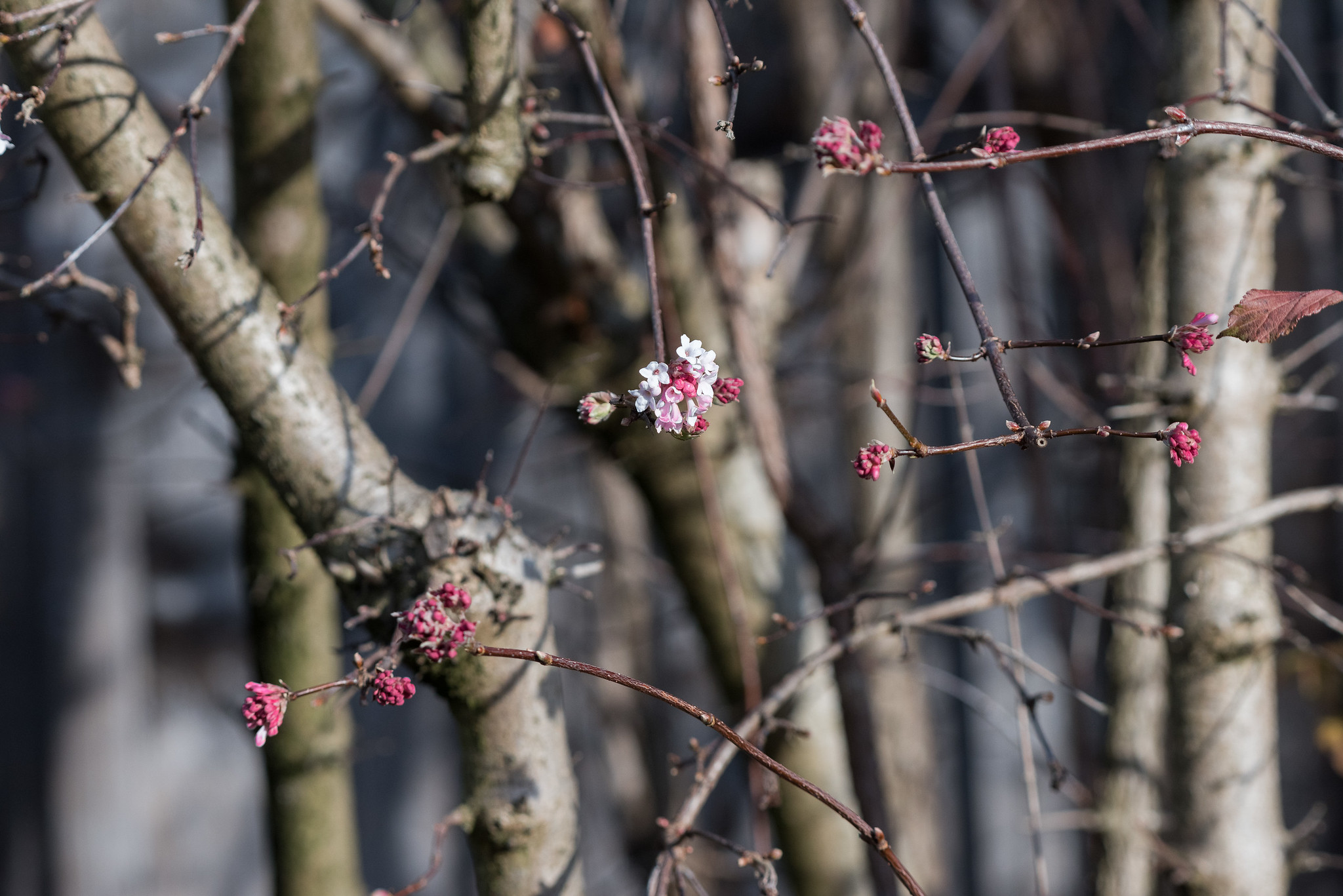
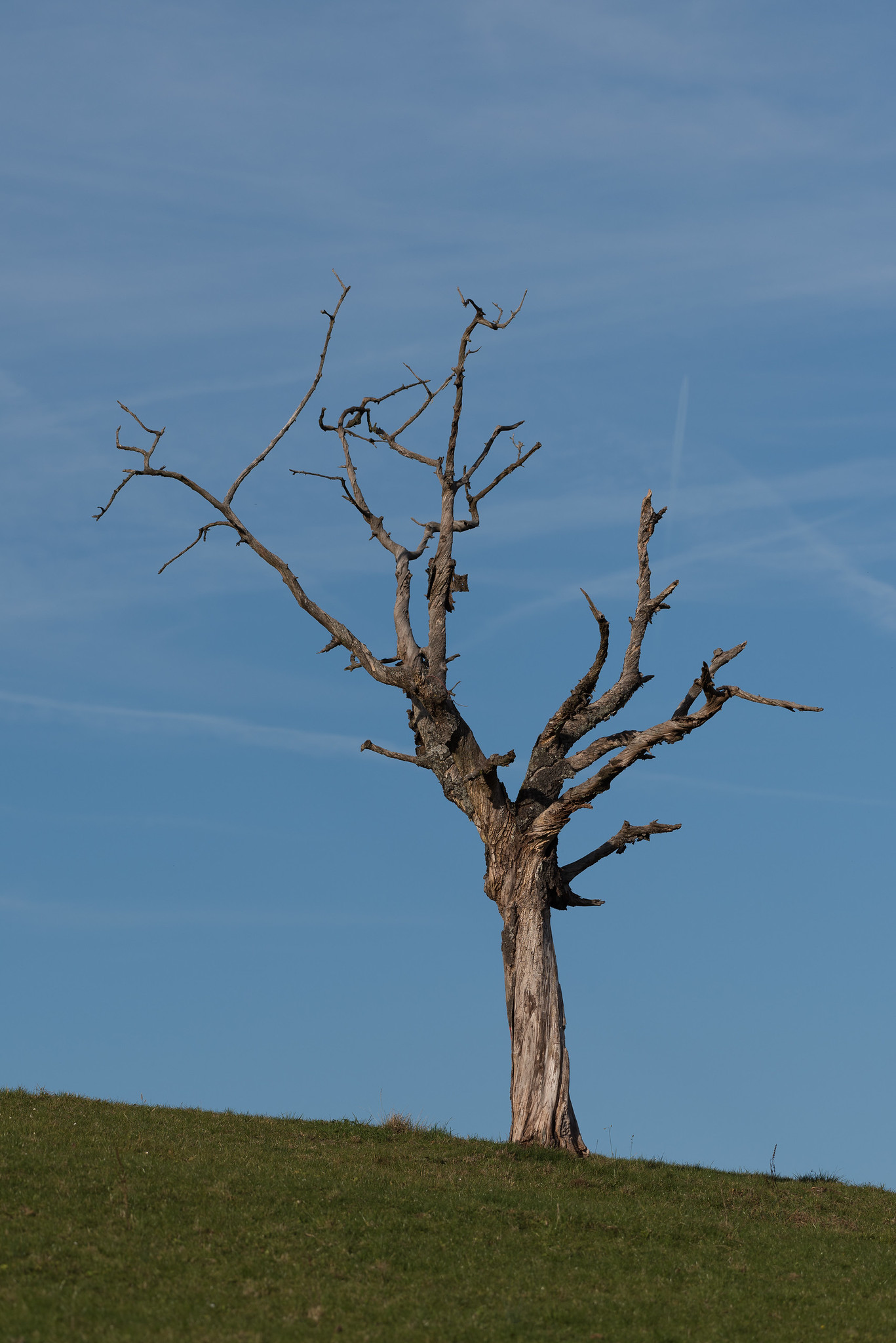
But then, moving to further distances, things became less straightforward. Shooting two pictures each time meant that usually one of them was sharp, but the other not.
I got really confused at this step; the shutter speed was 1/2000s and I also had VR on; either VR was unneeded (i.e. contributing blur instead of helping) or something else was going on. After much head scratching, I think it’s a combination of the following factors:
- shooting at long range; for the pictures I’m talking about, the subject was between 800m and 1.2km; at this range, haze and atmospheric disturbances start to play a role.
- lens is heavy—2.3kg—and adding the camera (1kg) it means that I was hand-holding 3.3kg, which is much more than I’m used to; the focal length of the lens, at that distance, means that any small movement (rotation or shift) translates into significant subject movement, especially when viewed at 1:1 magnification on a 36Mp body.
- there might still be some interplay between VR and shooting at this shutter speed, although not sure.
So, for such style of shooting, I need to train more—both photographic technique and arm strength at the gym ☺ In the meantime, it is possible to get such shots reasonably sharp, for example this picture of the (start of the) Alps taken from what is technically still Zürich city:
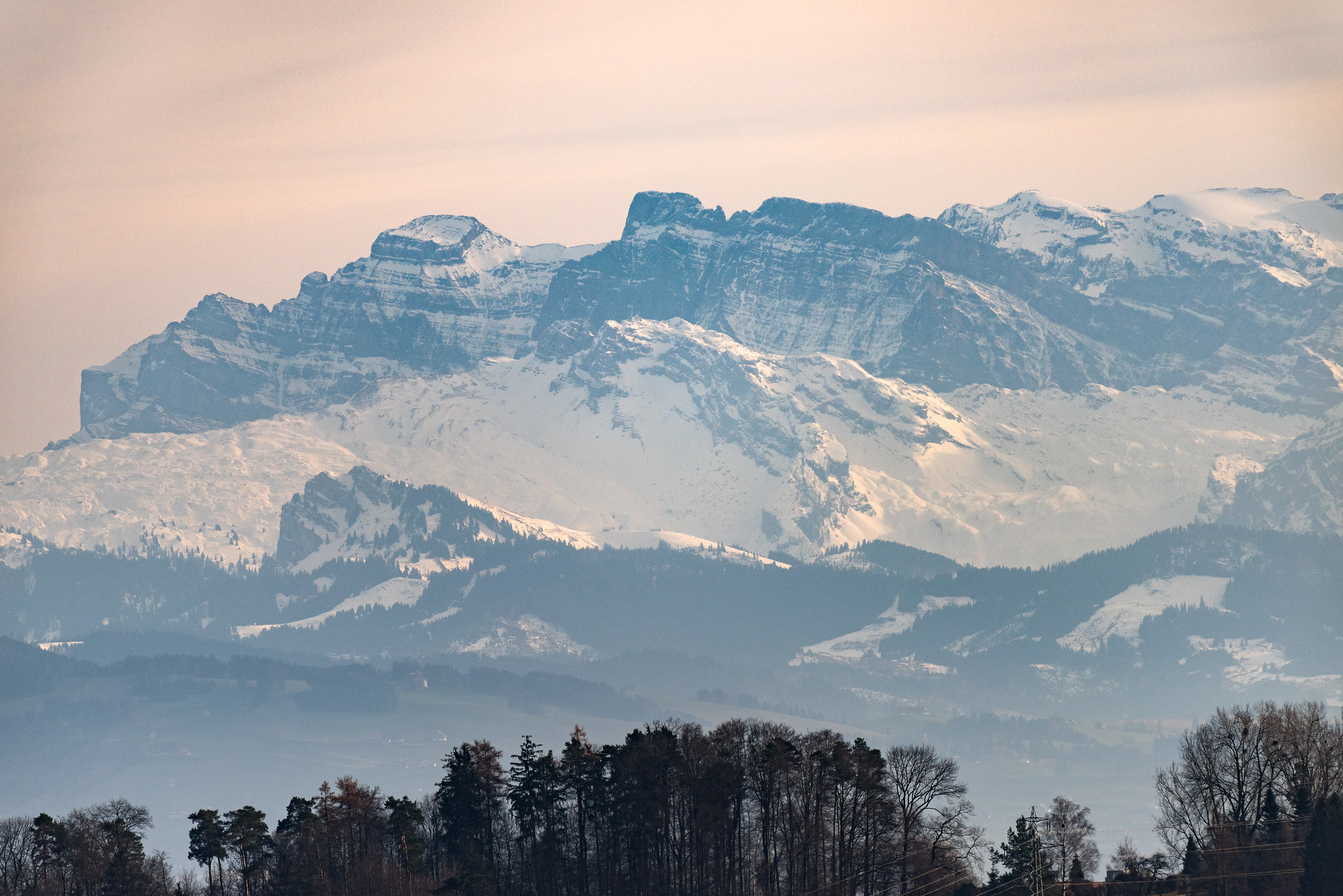
I’m happy with the detail (at this distance), however I was not able to correct the colour due to the haze between me and the mountains; note that the trees on the bottom of the distance were not near me, but on the next or after-next hill. This picture confirms that with more practice things will get better.
Coming back to shorter distances, and shorter focal lengths, things are looking better. We were passing somewhat near some people playing with RC-controlled planes—not near enough to hear them, but near enough to see the plane quickly flying. Switched camera quickly to AF-C and Dynamic-21 focus, and - to my surprise - I was able to capture four good pictures, two so-so and four more clearly out of focus. But, for such a heavy length, hand-held and on the short notice, I was happy; the first picture is one of the so-so ones, but I kept it as I like the way the propeller is seen. All pictures at 290mm plus some cropping, 1/1250s, ISO between 900 and 1800, f/5.6 (i.e wide open):
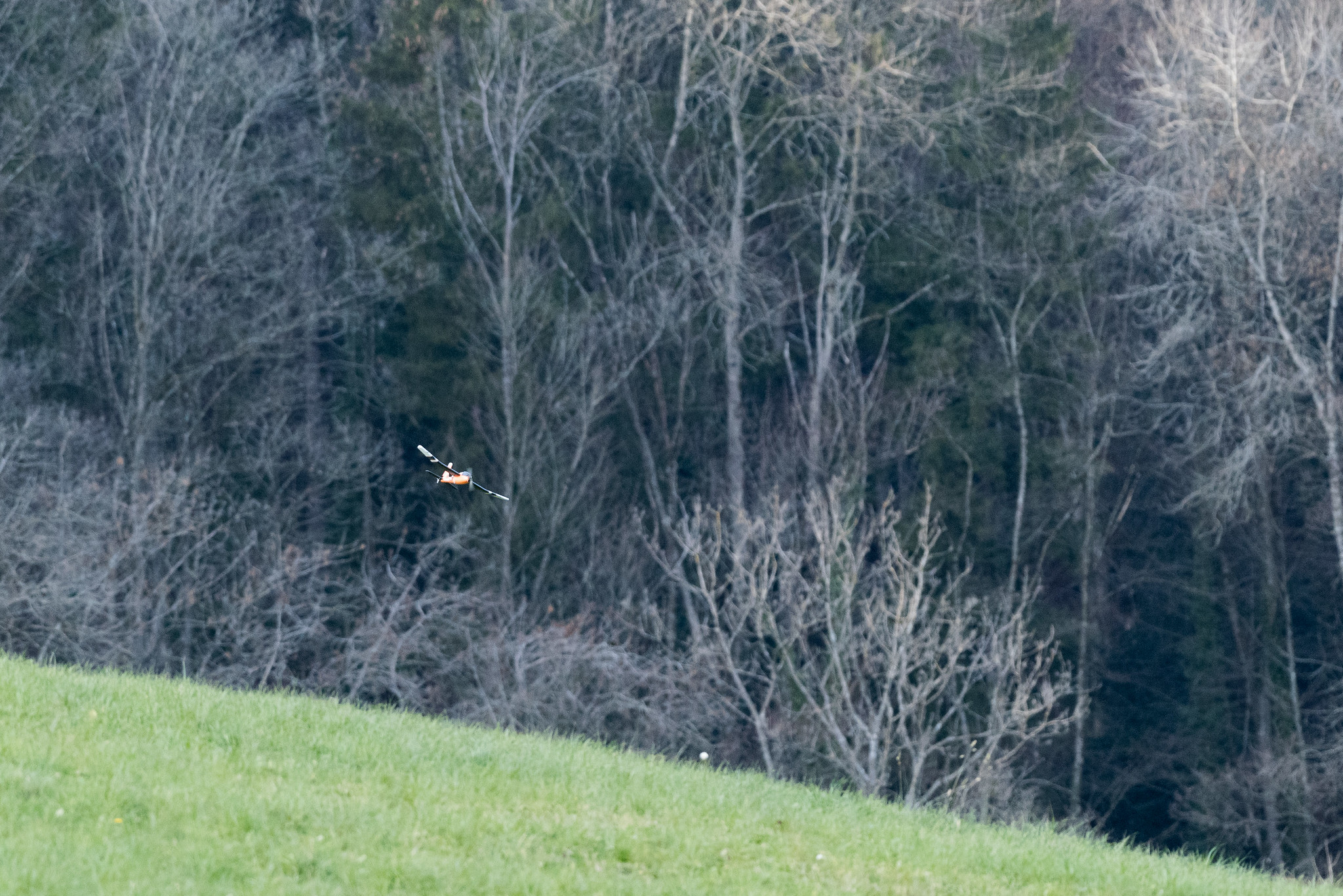
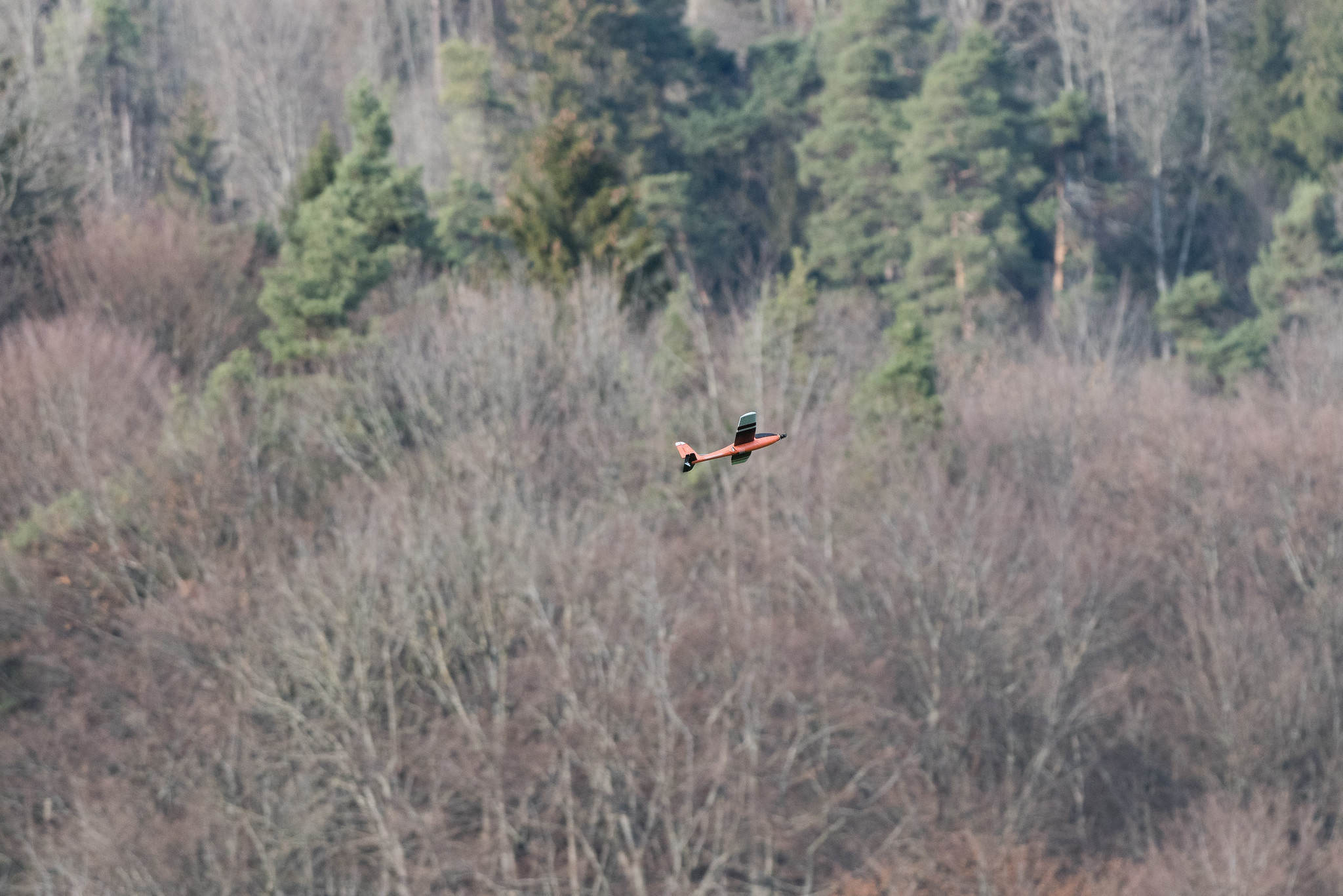
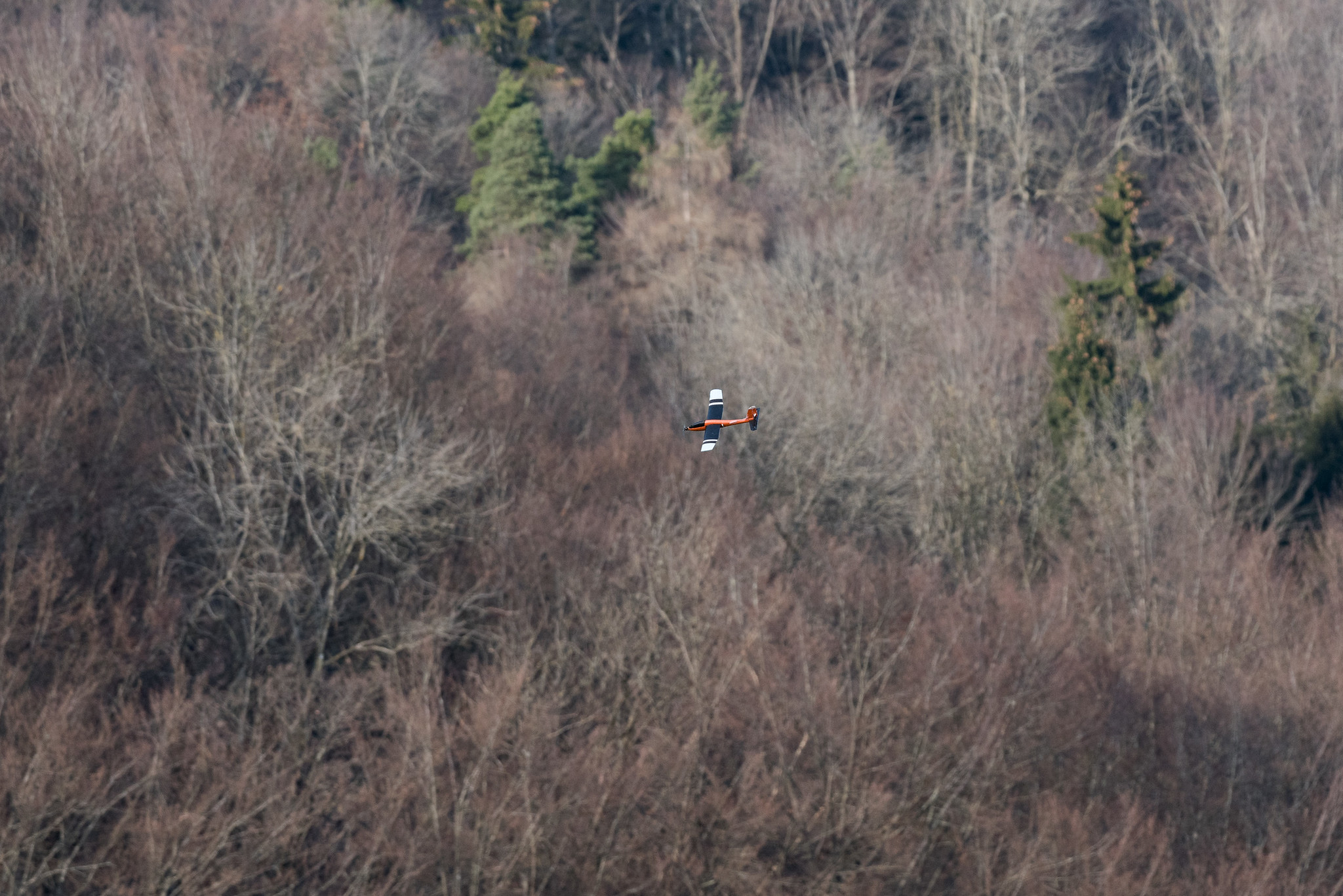
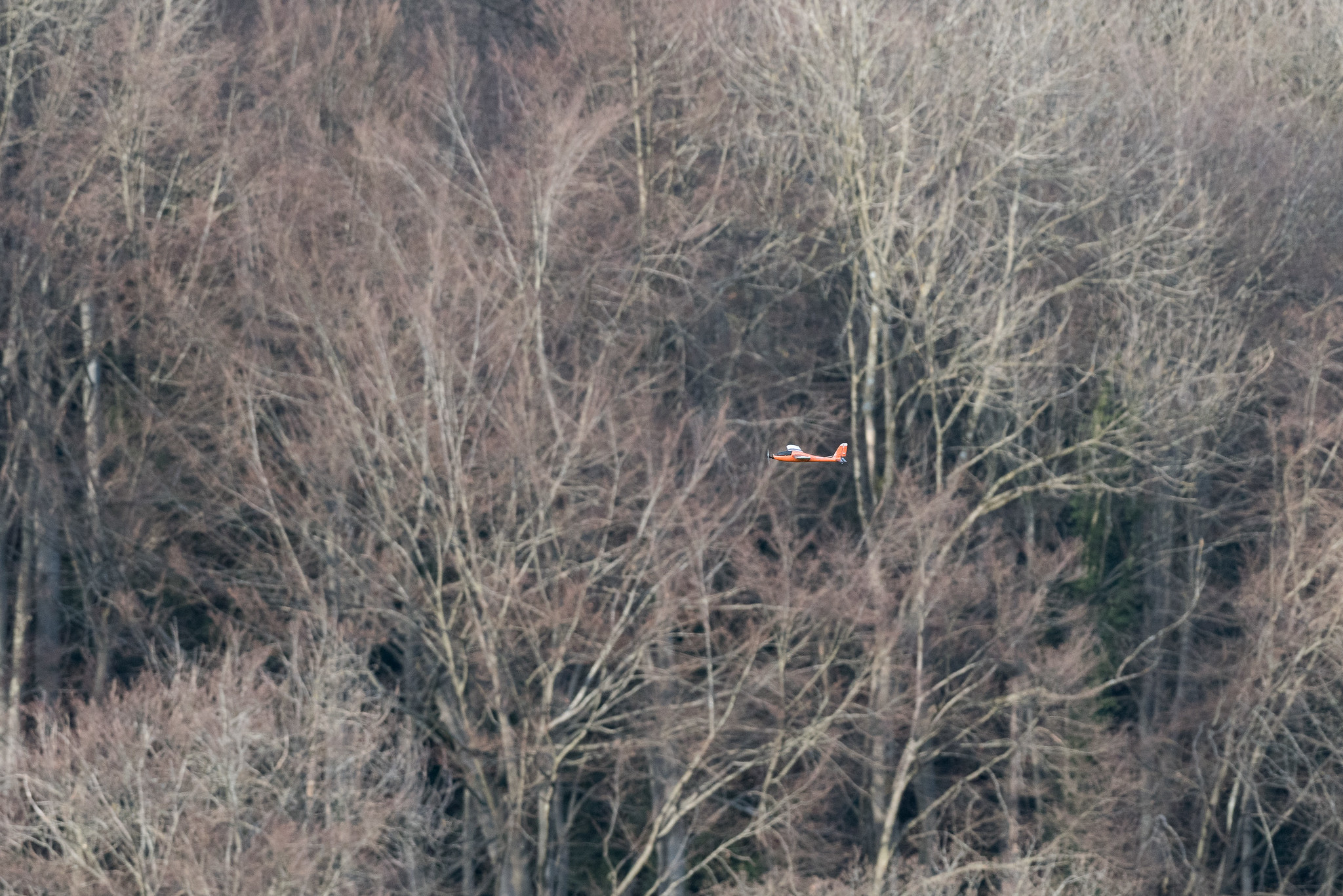
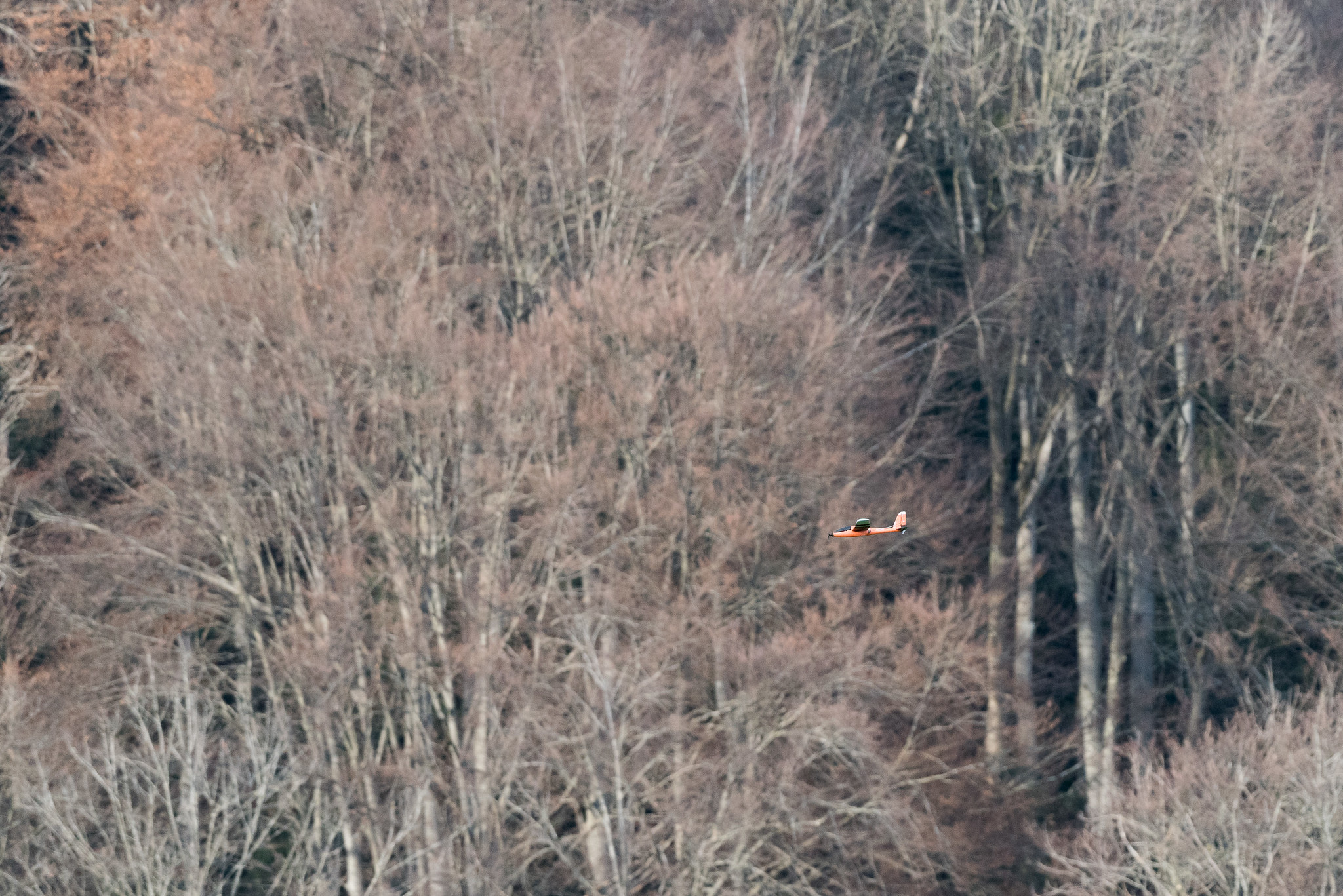
From this exercise, the conclusion is that the lens is OK-ish for tracking, although the not-so good keeper rate tells me that I need to be careful; I’ll have to see how a subject moving not left-right, but instead approaching or moving away from the camera would be tracked.
But enough pictures of small planes. At 500mm, but still somewhat close, trees:

At this step I’m starting to wonder if stopping down a bit would help with the sharpness; I’ll have to test that in the future.
Walking some more, finally a bird in flight; one of the hopes when I took the camera/lens out was that I’ll see some birds, but this was the first. 500mm, heavily cropped, but quite good result for myself (same autofocus settings as before):
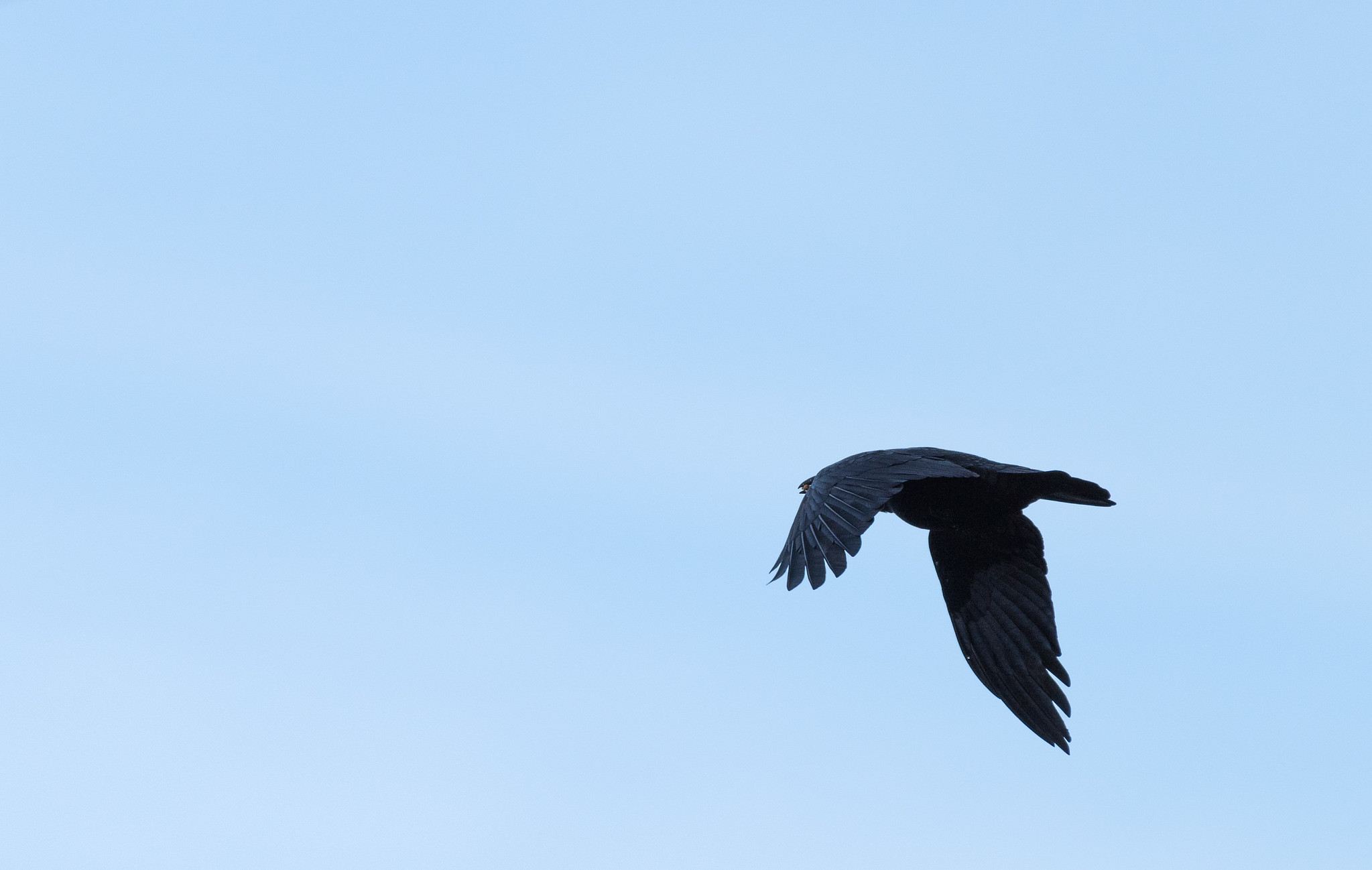
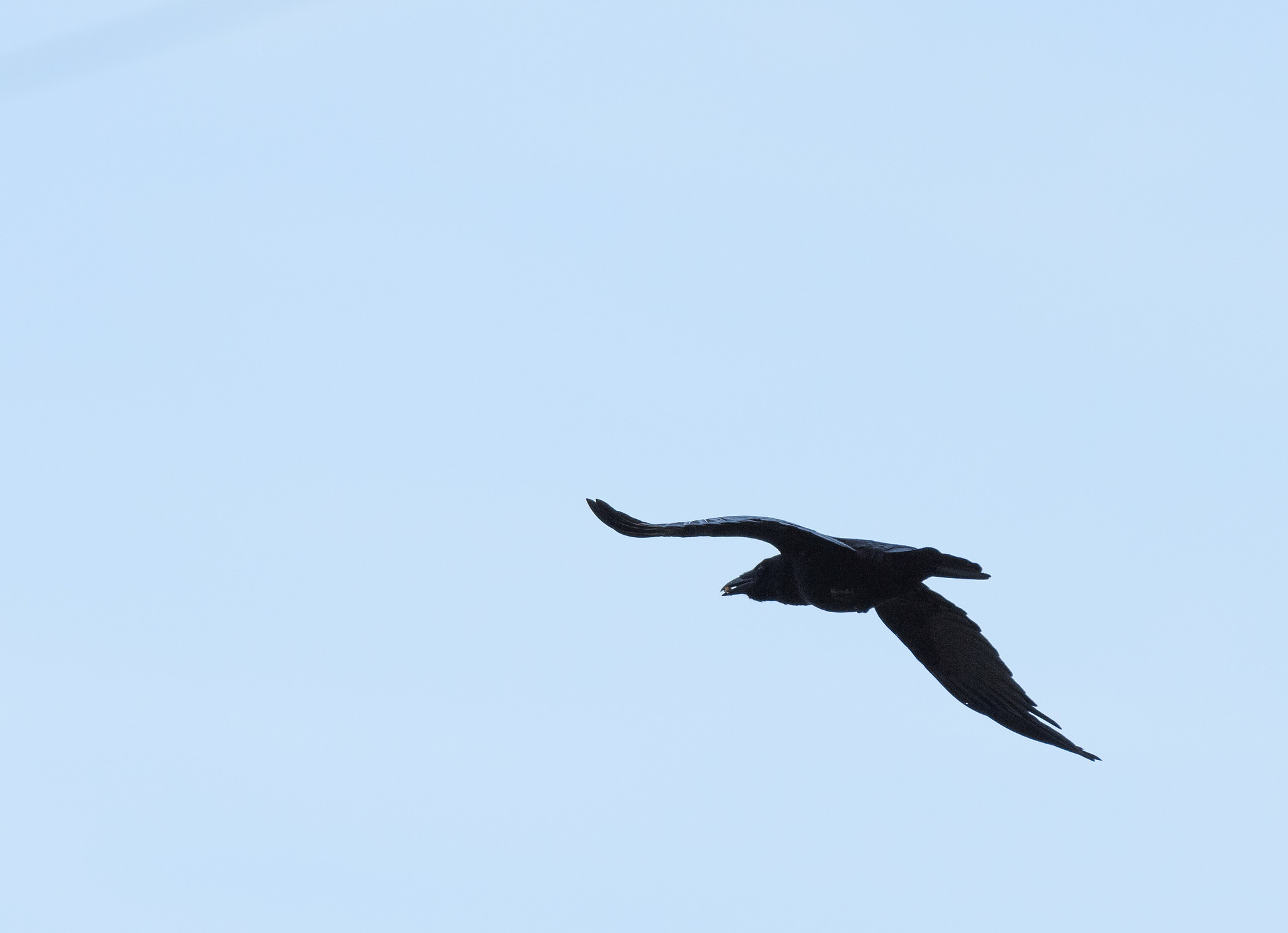
The only problem here is, as always with crows (I think these are crows), is the black bird against the light-blue sky (not even strong blue), which means the picture has a high dynamic range; recovering the shadows on the bird is difficult. But in any case, it’s clear the lens can deliver, if the photographer is good.
Next, a helicopter was gracious enough to pass by (pretty close):

Two minutes later, it was quite far, but since it was going in the direction of the Alps, it gave the opportunity for a nice shot:
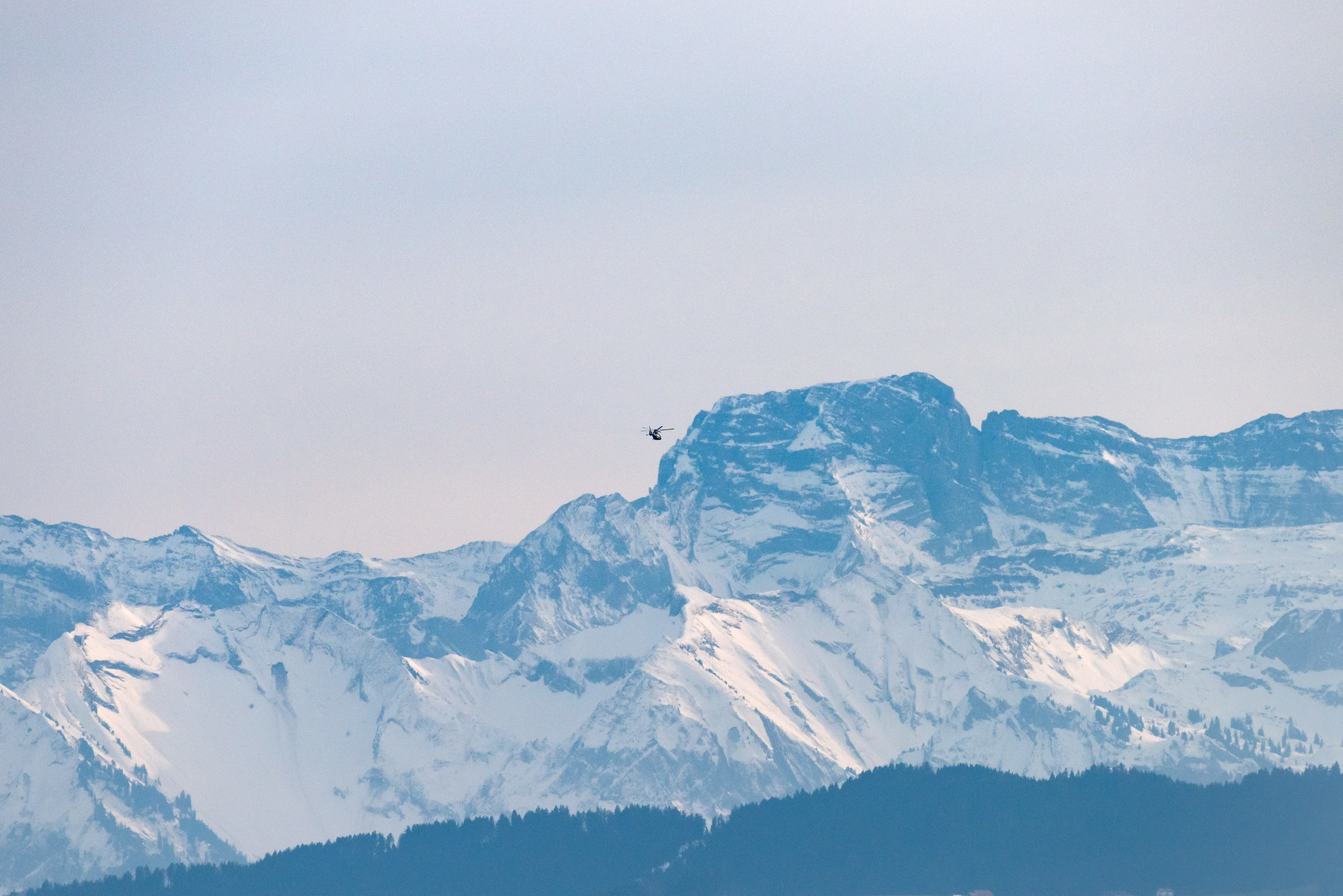
This picture is less sharp, but still I like it due to composition; not successful on small screens though, only if you see it full screen. Light is very difficult though… and about 10 seconds earlier would have been even better (more separation between the helicopter and the mountain).
And since we’re talking about planes, let’s see a plane at 500m, directly overhead, and quite high:
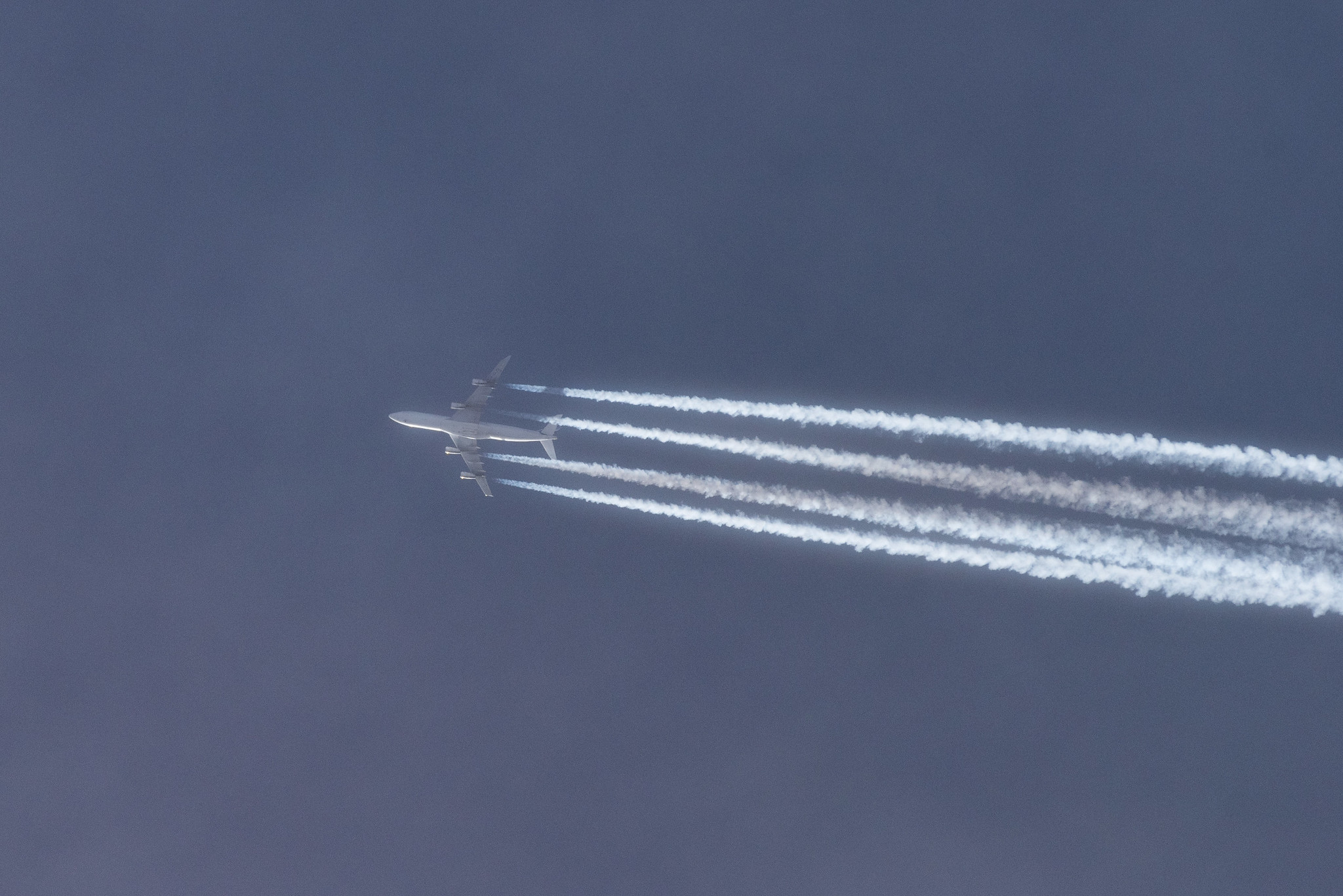
This picture (@500mm, cropped, 1/2000s) has the most detail of a plane flying high enough to have trails (not sure how to estimate, but at least 5km, maybe more around 7-8 I’d say) that I ever took. So yes, the lens can deliver, but it’s not easy. This shot, being shot more or less straight up, had the least distance through low-altitude atmosphere, so it has less problems compared to the mountains pictures. It’s still not really sharp (lens wide open), but the amount of detail… I’m sold :)
And to finish on a more close note:
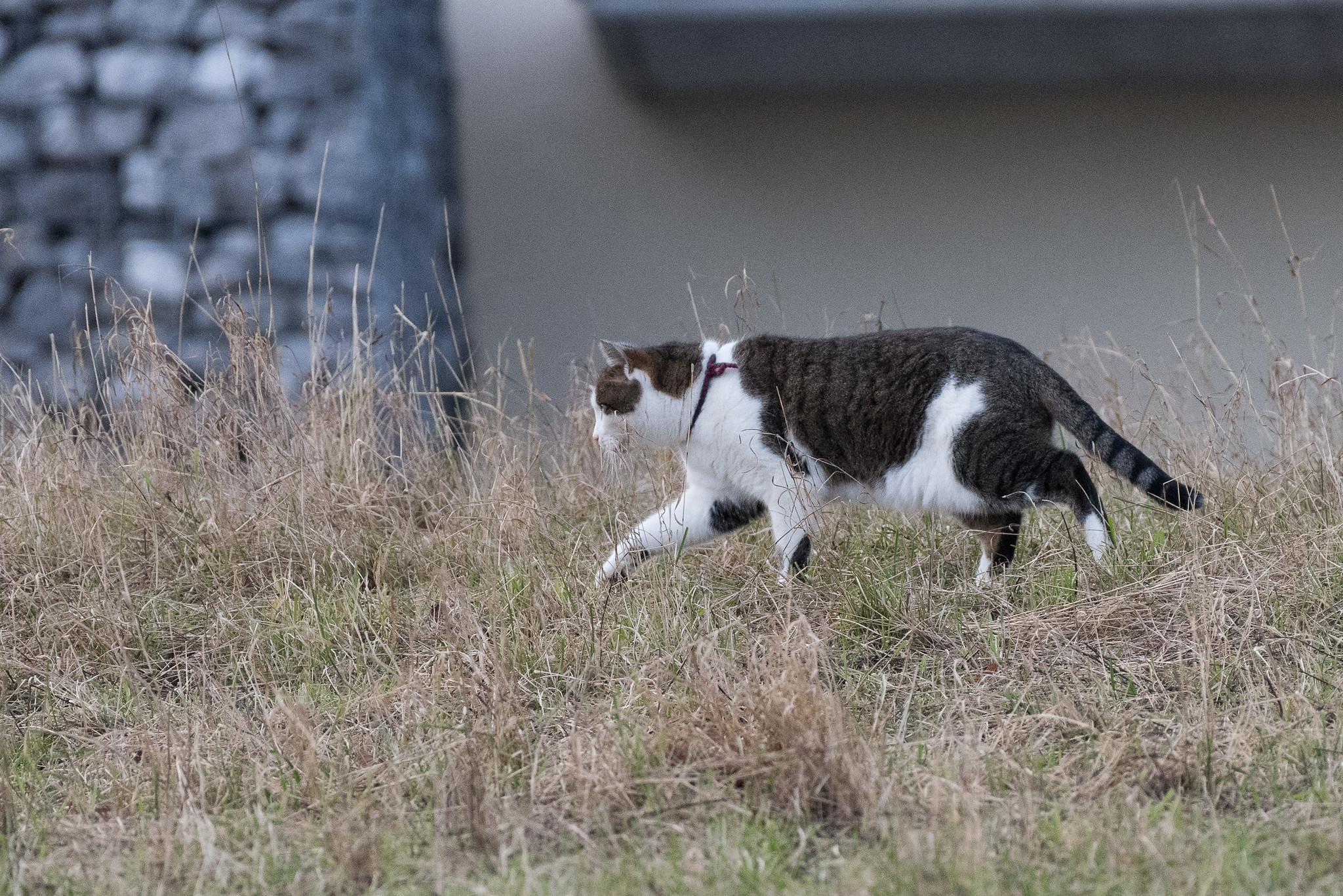
A long focal length lens allows one to get “close” without getting close, which means animals are not disturbed. The first picture with the cat (not shown) had the cat less alert; ears not fully up, although eyes were still seeking; this picture shows it fully alert and concentrated, like it was a wild cat hunting for its survival, and not a city cat, out just for fun.
So, summary:
- lens is nice (optically), although fully open (f/5.6) and hand-held and at long distance it doesn’t yet give me full satisfaction; I will need to improve my technique and learn how to properly handle it.
- in combination with a high-megapixel body (D810), it allows fun although pointless feats; pointless doesn’t stop hobbies, though ☺
- I need to go to the gym; not “more often”, just start going!
All the best to everybody for the coming holidays, and thanks for reading.